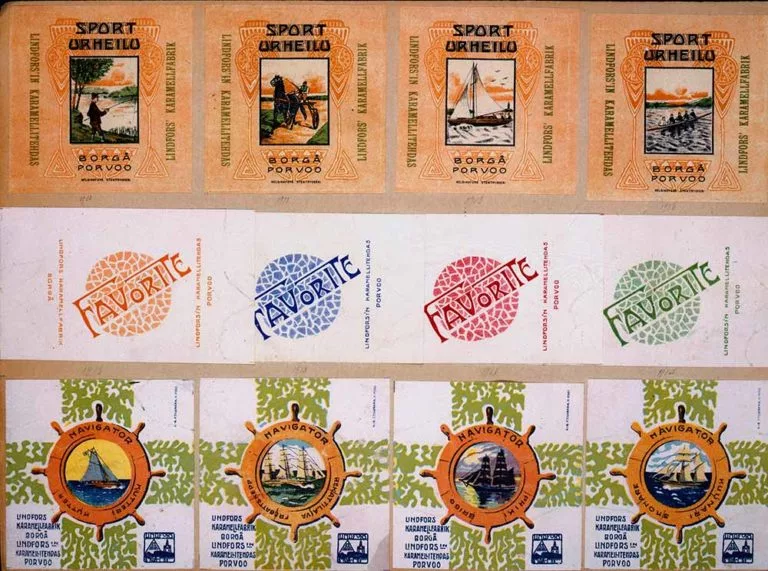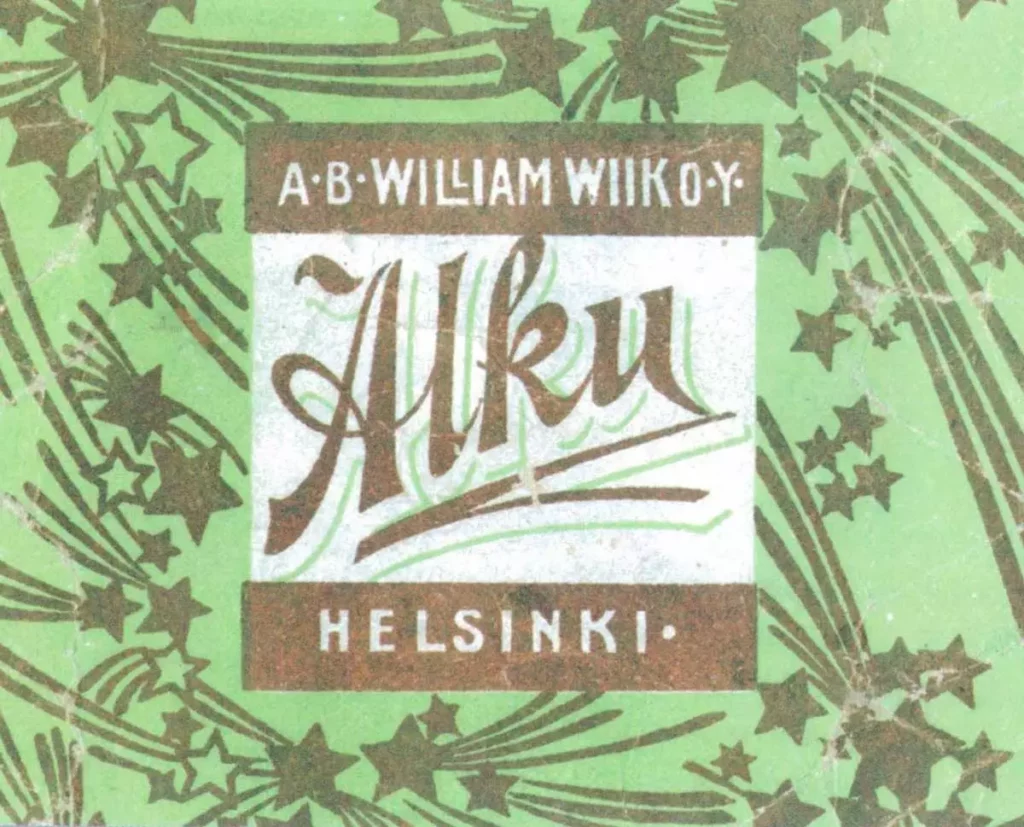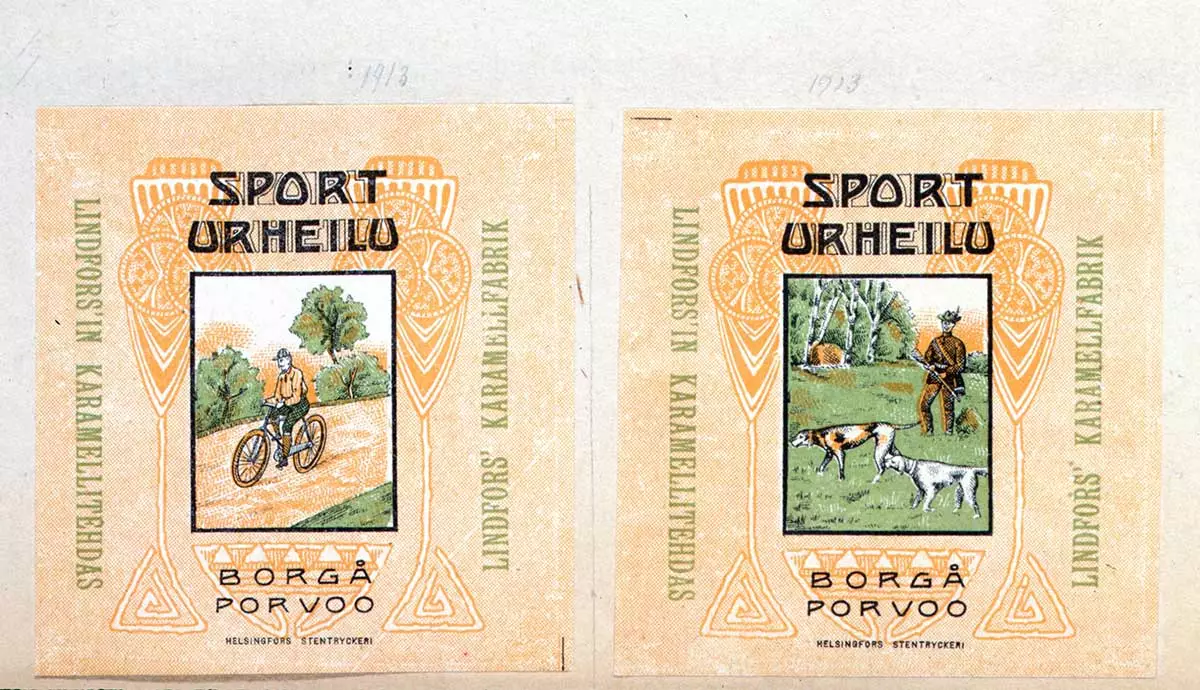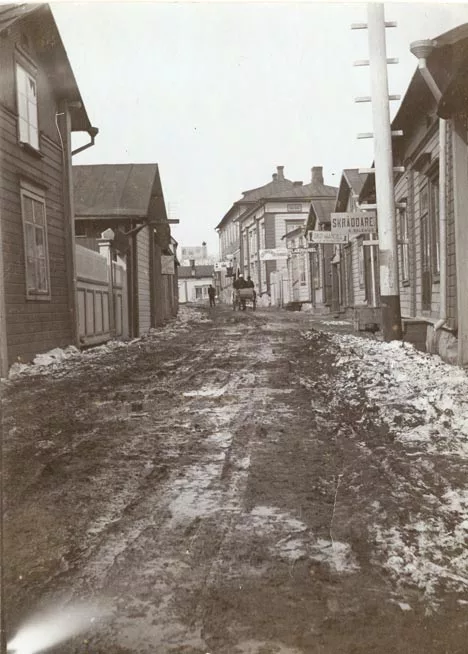A.W. Lindfors sets up a sweets factory
In the spring of 1897 the baker A.W. Lindfors informed that he was going to produce sweets, chocolate and marmalade and other products included in the bakery range.
The factory was named A.W. Lindfors sweets and marmalade factory.
He wanted the factory to satisfy the craving for sweets of the people of Porvoo – around 4 500 – and surroundings. Sweets were manufactured for retail as well as wholesale.
In the initial years, the manufacturing activity was modest. With five employees, the value of the production was around 30 000 Finnish marks of that time. Board members were A.W. Lindfors’ sons Ivar, Axel and Karl Lindfors.
Precise information as to what kind of sweets they produced have not been found, but it seems that the oldest products were marmalade, mixed sweets without wrapping, sweets for children and “onion candies”, so called because the wrapping was twisted in a way that resembled an onion.
The factory also produced special sweets for entertainment, such as weddings, funerals and family parties. The candies for Christmas, weddings and funerals were big-sized and the wrapping indicated the occasion in question.
The guests at funerals were offered 15 cm long candies with wrapping in two colours: the bottom was white and the top was black and shiny. The ends were cut into fringes.
Today we rarely see candies at funerals, but wedding candies have almost turned into an art.





Beautiful wrapping
The sweets were manufactured by hand and the paste was turned, twisted and drawn out. The majority of the employees were needed for wrapping, a task performed by girls who were paid 5 pennies a kilo. The working day was 10 hours long.
The paper used for wrapping was beautiful, artistic, of various sizes and could also be instructive. It was a popular collection item. The descriptions included, in addition to raw materials, the invention of the car, various types of sport, the coat of arms of municipalities and proverbs. The wrappings used by Lindfors also included sights from Porvoo, sail ships and the tale Puss in Boots.
Know-how from Russia
Russia was known to have many sweets masters and the necessary know-how. For instance, the roots of the Alku caramel candy probably lie in Russia. In the beginning of the 1800’s, quite a few Russian families lived in Porvoo and it is possible that they supplied the Lindfors bakery and sweets factory with know-how.
The best sweets were made by the masters in Saint Petersburg. The first Finnish sweets factories were situated in Vyborg – and in Porvoo and Helsinki. Prior to 1901 Helsinki had eight sweets factories and Porvoo had quite a few small producers of sweets which gave the town a good image. Several of these had started as bakeries.
The domestic production was boosted in part by the new customs regulation in 1897 imposing duty on sweets from Russia – previously Russia protected its own production with import duties – and in part by the economic boom towards the end of the century and also by the ongoing urbanization.


Sugar was a delicacy – but also medicine
You could buy sweets from the sweets factories, but also at pharmacies. The apothecary used to sell sugar and honey sweets as well as sugar candy or, rather, candy sugar which was the only type of candy for many children in the 1800’s. The pharmacies sold candy sugar until the 1960’s.
Sugar was thought to be an efficient booster of the effect of medicines. With candy sugar the children’s cough was cured and marzipan cured constipation and potency problems.
Even though the amount of sweets factories grew, along with the residents’ prosperity, for a long time sweets were considered a luxury, something that was only served at parties and to guests. Most sweets were still made at home and, during the years of famine, they could be made of, for instance, beetroot.
Lindfors’ sweets factory offered the residents of Porvoo new flavours.
A son takes over the sweets factory
Only one year after the setting up of the factory, Ivar Lindfors bought the factory from his father. However, the name remained the same until 1928.
The minutes of the magistrate state in 1898 that August Lindfors gave up the production of sweets on a large scale, but he continued to run the bakery and was director of the sweets factory until the day he died in 1906.
Many employees in bakeries died young as a consequence of hot air and lung diseases caused by the flour dust as late as in the beginning of the 1900’s. August died at the age of 53, but the cause of death is not known.








